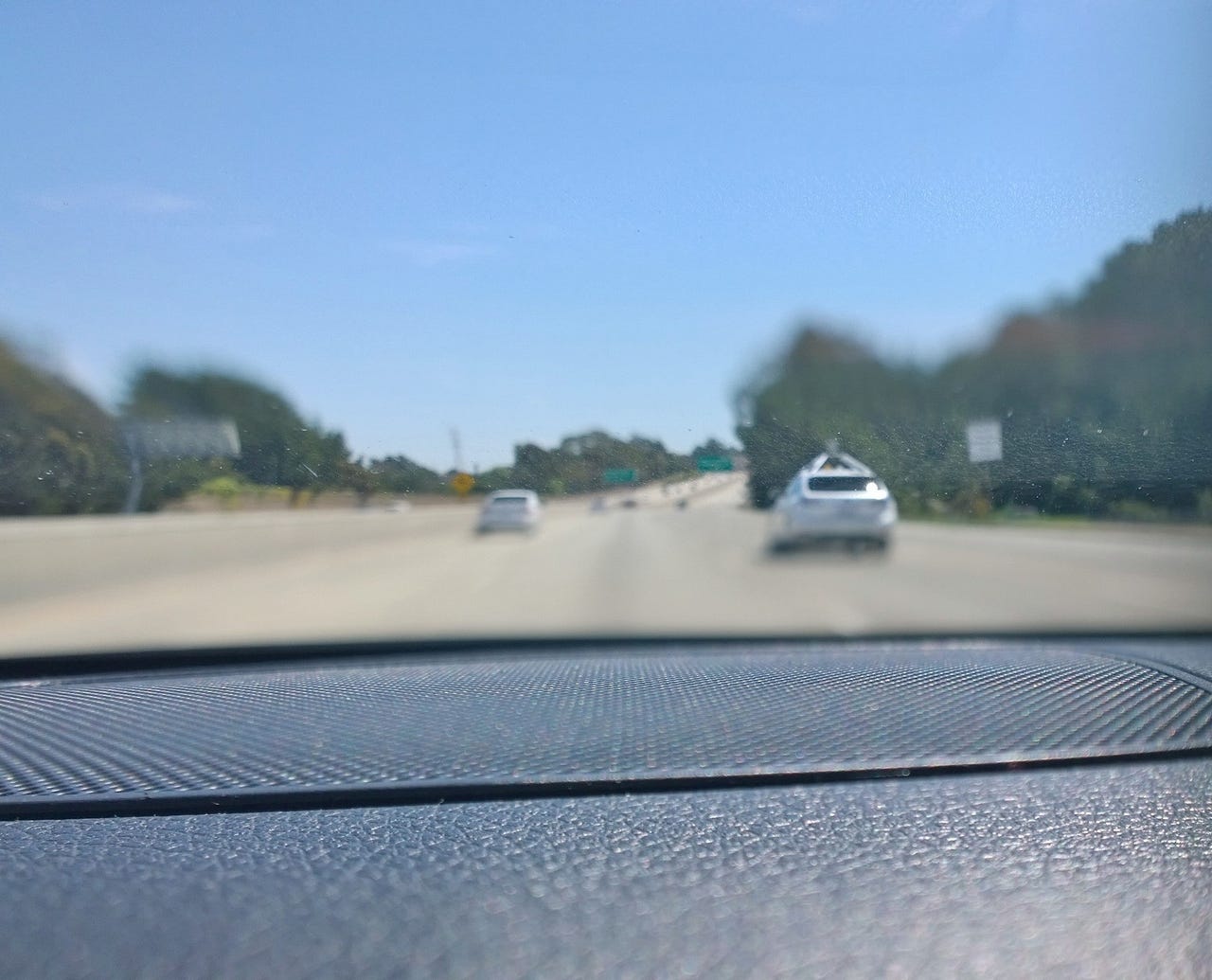Just another singularity

Driving out of San Francisco after a Dropbox event the other week, I spotted something odd in my rental car's rear view mirror. Speeding up the hill behind me was a white SUV — not that odd on 280, but it had a spinning silver cylinder on its roof. As it passed me I saw that it was one of the new generation of Google's self-driving cars. "Ah!" I thought, as it accelerated away at the top of the hill, and thought nothing more of it until I got to where we were staying.

If you'd asked me, just a few years ago, if I'd have been surprised to see a robot in freeway traffic, I'd have agreed. Robots were for space, or for factory floors. But then I got one to vacuum the carpet, another to wash the kitchen floor, and one more to clean up after the cat. They weren't the science fictional general-purpose robot with its humanoid form and monotonic voice. Instead, they took cues from another science fictional root, Robert Heinlein's Door Into Summer, and its army of task-focused, single-purpose robots.
And so, as it sped past, Google's robot car wasn't anything really new, just another larger Roomba speeding its way from San Francisco to Mountain View. The man in the driving seat sat back, his hands off the wheel, keeping an eye on the road and the car, relaxed and alert. It merged with traffic, another white car in a stream of white and silver metal machines. Then it was gone, just another sign of a future turned real.
Another science fiction writer, Vernor Vinge, came up with what he called the "Technological Singularity" to describe his thoughts about the development of AI technologies and how they'd affect the world around us. Inspired by the mathematical singularities at the heart of a black hole, where strange physics are wrapped around by gravity and the unforgiving barrier of the speed of light, forever unknowable, Vinge coined his phrase to describe a point at which tomorrow's world would be impossible to describe to someone from today.
But singularities like Vinge's are nothing new. We've been through them again and again, and we're going to keep on passing through points where the new changes everything. Could you describe enclosed fields and crop rotation to someone from the other side of the agricultural revolution, or a modern factory to someone from before the industrial revolution?
Tech Pro Research
How about one of today's key megatrends, mobile?
Someone with one of the first Motorola carphones might be able to understand today's device-saturated world, but only just. Powerful computers in every pocket are another singularity, the intelligence augmentation of search changing the way we interact with the world around us. Take mapping. We used to buy books of maps for cities and countries. Now we just trust to Google or Here or Apple to get us where we want to go, and ask for more integration with public transport information and with live traffic.
My first mobile phone wouldn't be able to work with today's networks. In fact, the last transmitter that it could have worked with was turned off in 2001, nearly 13 years ago. A digital singularity made it obsolete, with the mobile industry throwing its weight behind the switch from ETACS to GSM. Just another dead technology on the road to something better.
As devices get more complex, we expect more and more from them. We push the envelope as users, demanding that the services and servers we connect to anticipate our actions and our needs. So we end up as endpoints to massive machine learning systems, with friendly front ends in the shapes of Now, of Siri, and of Cortana.
It turns out we can go further than Vinge, to say: One singularity drives another.
The metaphor of the singularity is an easy one, part of what makes it attractive, but it doesn't translate into a hyperbolic rush to infinity as some futurists suggest. Instead it's more like a series of one-way gates. Each one you pass through means you can't go back, but it doesn't mean you have to keep moving forward. You might want to stop for a breather, or go in a completely different direction.
The agricultural revolution changed the shape of cities and of governments; the industrial revolution that followed reshaped the world. And now our information revolution, as described by 1970s futurists, is itself spawning something new in those behind-the-scenes machine learning systems.
As that robot car sped past me, I spoke to a software agent on my phone, diverting it from navigating me down the freeway, and it took a photograph of the robot. A blurry, out of focus photograph, but in the act of talking to a phone, it was one machine-learning endpoint connecting in some small way with another. And then I realised, this was just another singularity, a moment that wouldn't have been possible to describe a decade ago.
In 2014 we're already living in 2004's science fiction tomorrow, and we're building 2024's in our growing, learning, networks of things. On to the next singularity and the next.
Further reading